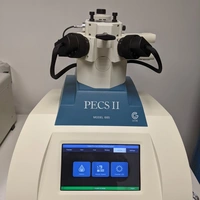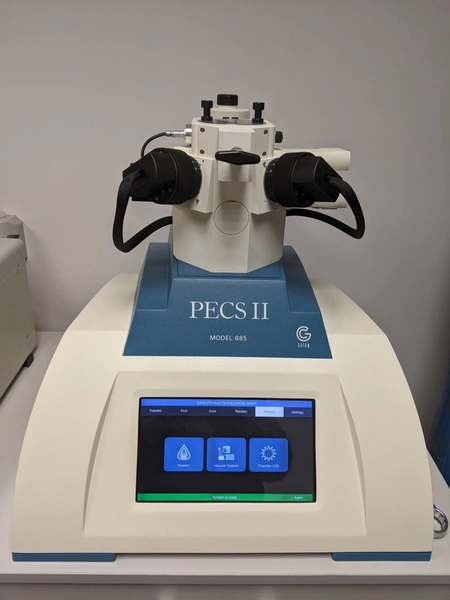Polerka jonowa i napylarka
Kluczowym czynnikiem, który decyduje o jakości otrzymanych obrazów w technice mikroskopii elektronowej SEM jest odpowiednie przygotowanie próbek. Na ogół przygotowuje się zgłady poprzez szlifowanie, polerowania oraz trawienie. Szczególnie wymagającą jest technika wstecznego rozpraszania elektronów (EBSD). W przypadku wielu materiałów, aby uzyskać odpowiednią jakość linii dyfrakcyjnych, konieczne jest polerowanie jonowe. Do uzyskania obrazów najwyższej jakości, np. bardzo małych obszarów struktur bliźniaczych, konieczne jest posiadanie specjalistycznej polerki jonowej, bowiem klasyczne trawienie elektrolityczne nie umożliwia uzyskania odpowiedniej jakości powierzchni próbek.
Warunkiem korzystania z polerki jest współpraca naukowa, której efektem jest na przykład:
- wspólne opublikowanie otrzymanych wyników,
- popularyzacja wyników w wystąpieniu konferencyjnym,
- nawiązanie współpracy, której wynikiem jest złożenie wniosku o grant.
Polerka z systemem do napylania znajduje zastosowanie do przygotowania próbek do mikroskopii elektronowej SEM, mikroskopii sił atomowych AFM, spektroskopii EDS, katodoluminescencji (CL) oraz badań dyfrakcyjnych. Techniki te są wykorzystywane w badaniach prowadzonych przez pracowników Wydział Fizyki i Informatyki Stosowanej. Wydział dysponuje obecnie dwoma mikroskopami elektronowymi i zakupiona polerka znacznie zwiększy ich możliwości badawcze.
Przyrząd umożliwia badanie własności mikrostrukturalnych materiałów, np. metali o strukturze heksagonalnej do zastosowań biomedycznych. Wyznaczać można rozmiary ziaren, parametry bliźniaków mechanicznych, parametry granic ziaren i ich wpływ na własności materiału. Przy użyciu polerki przygotowuje się próbki do ilościowych badań metodami dyfrakcyjnymi (promieniowanie rentgenowskie, neutronowe czy też technika wstecznego rozpraszania elektronów EBSD).


Jednostka odpowiedzialna